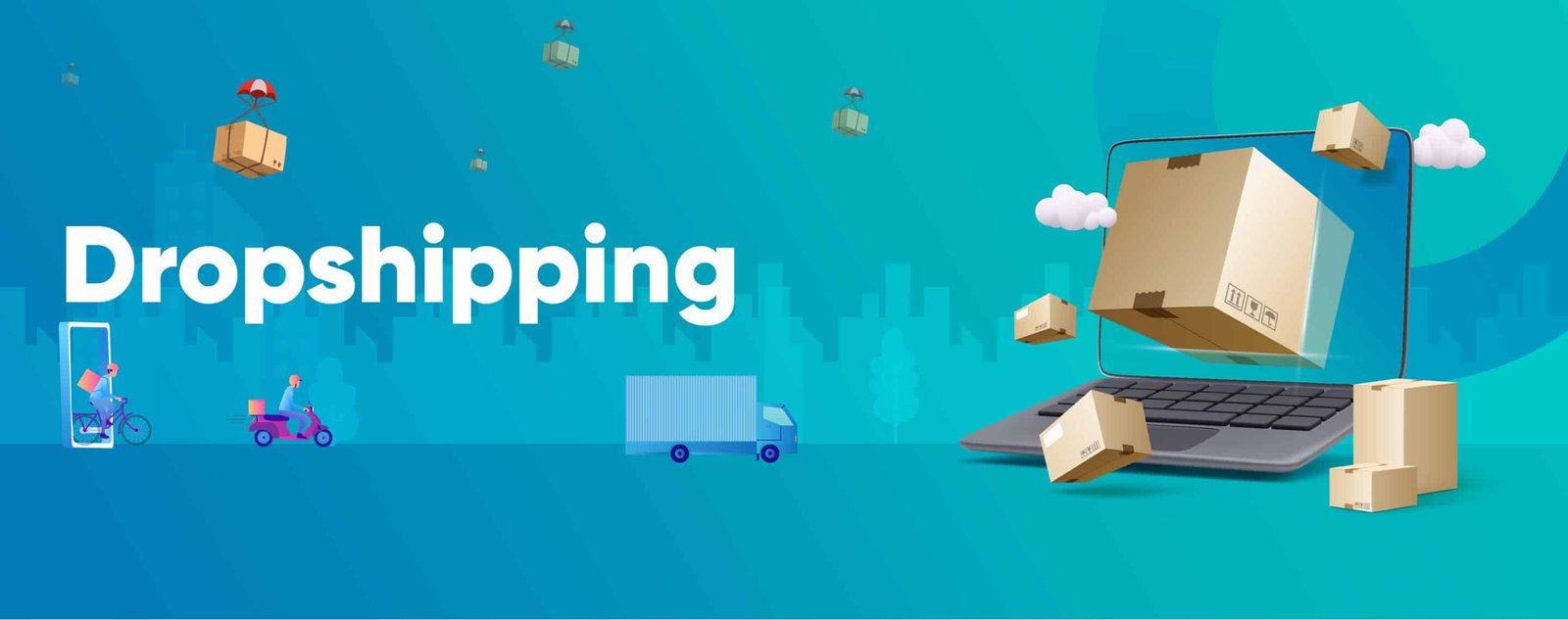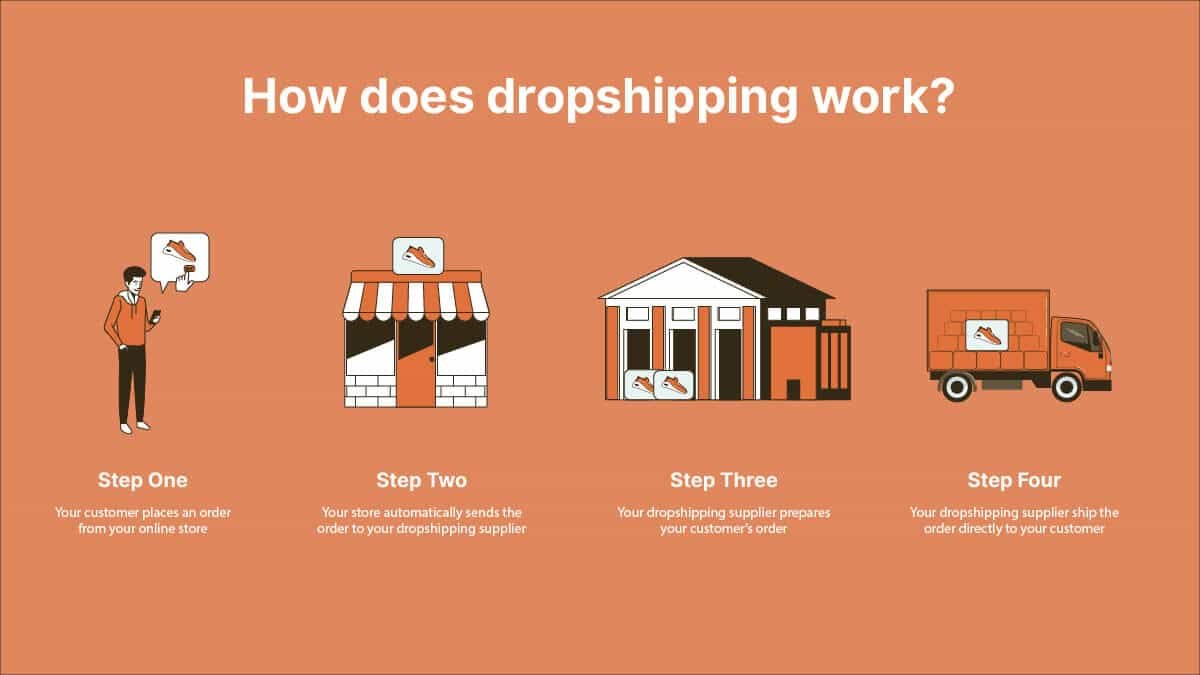
What is Dropshipping?
If you’re looking for an online business opportunity, you’ve heard of dropshipping. For the aspirant e-commerce business owner, dropshipping is a good online business concept. With a minimal amount of initial money and some labor, drop shipping can be started. When you experience success, you can scale by devoting additional resources to branding and advertising. How does dropshipping operate, and why should you use this strategy to fulfill your entrepreneurial aspirations?
Before continuing, you must understand the definition of drop shipping.
Definition of dropshipping
Dropshipping is a retail fulfilment for online retailers where merchants buy goods from outside suppliers as customers place orders rather than keeping inventory in storage. After that, the merchandise is delivered right to the customer. In this manner, the seller is relieved of direct product management. Sounds recognisable?
The shipping and order fulfilment process is largely hands-off for a retail store manager. The retailer is not required to keep stock on hand, place bulk orders for inventory, or physically complete any orders. Instead, the third-party vendor will handle the merchant’s product shipping.
Dropshipping is advantageous for business owners because it requires less operational capital to operate a store than the conventional retail model. You don’t need to start a brick-and-mortar business, employ staff, maintain lighting, pay expenses, or carry inventory. Instead, you set up an online storefront and purchase bulk from suppliers with inventory and storage facilities.
What is a dropshipping business model, and how does it work?
Through independent vendors, who produce goods just-in-time (JIT) for each purchase, dropshipping is possible. The suppliers who make the goods are given the specifications by the retailers when they get a sales order.
Although drop shipping is frequently the backbone of e-commerce firms’ operations, it can also be a useful addition to more conventional, inventory-based retail strategies. Dropshipping can be used for market research, such as testing the waters before committing to selling in a market, since it does not result in any extra residual inventory.

A formal dropshipping contract must be created to establish a dropshipping arrangement with a supplier. The agreement’s parameters should be spelt out in the contract in detail about
- Definitions
- Term Termination
- Vendor’s function
- role of the supplier
- shipment issues
- Ability to change accountability
- Terms of nonpayment
- Severability
- Effectiveness
- Items offered Services offered
- Tax and sales billing
Key players in the dropshipping model
Let’s go down a few major participants and their functions in further detail, starting with the seller of record, your e-commerce business.
Seller of the record
The dropshipping procedure starts with you.
You are listed as selling the product to the final customer, often known as the seller of record (SoR). You determine the selling price, report the transaction as revenue, and take on the burden of paying the applicable sales tax. You are the seller of record because you own the goods before they are sent to the consumer, even if a third party inventories and transports the goods.
Manufacturer
Manufacturers produce goods that they can sell to retailers and distributors. Although you can buy products directly from manufacturers, the large minimum orders may have made it difficult to launch or grow your firm. Some producers might provide dropshipping services.
Wholesalers
Wholesalers typically purchase goods from producers and resell them to retailers at a small markup. They perform the role of middlemen; typically, they don’t sell to customers directly, but they might offer drop shipping services to retailers.
Based on your business model and fulfilment needs, decide which dropshipping providers would be ideal.
Potential Pros and Cons of dropshipping

In reality, every fulfilment strategy in ecommerce has benefits and drawbacks. Whether the benefits outweigh the costs will largely rely on your objectives and financial status. Here are some potential benefits and drawbacks when deciding whether dropshipping is the best option for your online store.
Dropshipping has several advantages:
Costs associated with keeping a storage facility or transporting goods to clients may be reduced because you don’t store or ship the products.
Starting costs: Dropshipping can be used by business owners who want to launch a venture with a small financial commitment because they don’t need to purchase equipment or other resources to fulfil orders.
Multi-channel selling: You can employ drop shipping for your company while marketing through social media, your website, an online retailer like Amazon, or all of the above.
Operating location: With drop shipping, you may complete orders from anywhere, allowing you to operate from home.
Scalability: By utilizing suppliers, it may be possible to take more orders while keeping the same amount of inventory in stock for packing, shipping, and storage.
Possible drawbacks to dropshipping include the following
Dropshipping is very competitive because of the low startup costs and required capital.
Product quality: Because dropshipping decrease your involvement in the order fulfilment process, you have less control over the quality of the products you sell and cannot guarantee their quality.
Branding: You can find it difficult to set your product apart from identical goods made by other vendors since the things you sell need to be more distinctive and easy to differentiate from them.
Profit margins: If your product has little to no points of differentiation, your company may engage in more intense pricing competition. Low price points can reduce your profit margin.
Timeline for fulfilment: When a dropshipping service handles fulfilment, you do not influence order selection, packing, or delivery.
Inventory management: It might not be possible to provide real-time updates on what is currently in stock. Customers may be discouraged from placing more orders, and your brand may suffer if they place an order only to discover that the product is out of stock.
Variety of offers: You can have fewer options for special offers and promotions, like bundling or free delivery because you need to manage order fulfilment.





